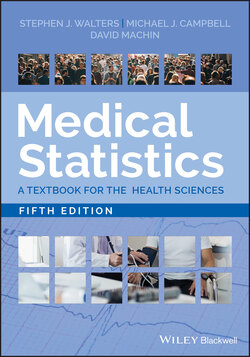Читать книгу Medical Statistics - David Machin - Страница 103
Example from the Literature – IV Treated Exacerbations in Patients with Cystic Fibrosis
ОглавлениеCF is a genetic disorder that affects mostly the lungs. Long‐term issues include difficulty breathing and coughing up mucus as a result of frequent lung infections. There is no known cure for CF. Lung infections are treated with antibiotics which may be given intravenously (IV), inhaled, or by mouth. The build‐up of mucus in the lungs causes chronic infections, meaning that people with CF struggle with reduced lung function and have to spend hours doing physiotherapy and taking nebulised treatments each day. Exacerbations (a sudden worsening of health, often owing to infection) can lead to frequent hospitalisation for weeks at a time, interfering with work and home life.
Hind et al. (2019) looked at the incidence of IV treated exacerbations in patients with CF as part of a pilot randomised controlled trial (RCT). They observed 60 IV treated exacerbations in 60 patients with CF in six months of follow‐up (27 patients had no exacerbations; 14 had one; 13 had two, 4 had three and 2 patients had four). This gave a mean of one exacerbation per six months (see Figure 4.6). What is the probability of a patient having no exacerbations in a year assuming the data follow a Poisson distribution?
Figure 4.6 Relative frequency of IV treated exacerbations in 60 patients with cystic fibrosis over six months.
With this pilot RCT data would anticipate an average of λ = 1 × 2 = 2 exacerbations per year. Using this value in Eq. (4.2), for r = 0, (since 0! = 1 and 20 = 1). Thus there is about a 1 in 7 chance of a patient with CF not getting any exacerbations in any one year.
